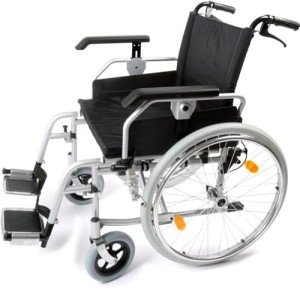Bariatric Transport Wheelchair
Developed to be pressed by caregivers, transport chairs include smaller sized front wheels and larger rear wheels. They are a popular choice for users with minimal mobility who can not stroll individually.
When shopping for a lightweight bariatric transport wheelchair, consider the user's needs and how they'll use the chair. Likewise, measure any entrances and other areas the chair will travel through.
Seating
Bariatric transport chairs feature a large 22 to 36 inch large seating area that accommodates extra-large users. The chair seat is made from breathable nylon and features cushioned arms that can be removed and swing-away footrests. Unlike standard wheelchairs, which are perfect for typical body weights, bariatric chairs have heavier frames constructed from reinforced products and larger rear wheels that make it much easier to press them. Speak with a mobility specialist to find out more about your alternatives and to determine which kind of wheelchair is right for you. Bariatric wheelchairs are often covered by insurance service providers like Medi-Cal if your medical condition satisfies their coverage criteria.
Frame
Bariatric transport wheelchairs utilize sturdy frames made of enhanced products like steel and have larger seats than standard wheelchairs. They are developed for individuals with greater body weights and can hold an optimum weight capacity of 700 pounds. They also have larger rear wheels, that make them simpler for caregivers to press. Bariatric wheelchairs are often covered by insurance coverage such as Medi-Cal, depending on the client's specific medical requirements and diagnosis. Ask a health care professional or mobility expert to assist pick the ideal chair for your special requirements.
Click here for more information. Medline Bariatric Transport Chair. Crimson Hammertone Frame.
Weight
While standard wheelchairs have lighter frames and smaller wheels, bariatric transport chairs include heavier-duty products and a broader seat to accommodate users who weigh more than average. Since of their specialized style and building and construction, they tend to cost more than basic chairs. Nevertheless, some insurance coverage programs like Medicare and Medi-Cal may cover the expense of these chairs if the user satisfies the requirements for protection. To get heavy duty bariatric wheelchair about which chair is ideal for you, contact a rehabilitation expert today.
Wheels
Bariatric transport wheelchairs have larger rear wheels than basic designs, making them easier to push. They're often used in health centers and home settings, where the chair is pressed by caretakers. bariatric heavy duty transport wheelchair -large rear wheels likewise enable the chairs to navigate a range of surface, including outdoors.

Standard wheelchairs normally have smaller sized wheels, that make them more maneuverable indoors but less appropriate for everyday use on outside streets and other surfaces. Mobility professionals suggest seeking advice from a healthcare company or mobility specialist to choose the best wheelchair for your particular requirements and goals.
This heavy-duty, nylon enhanced steel transport chair supports clients approximately 500 pounds and features a spacious 22" seat, padded desk-length armrests, swing-away footrests and hand brakes. The 12-inch rear wheels guarantee a smooth trip in any environment.
